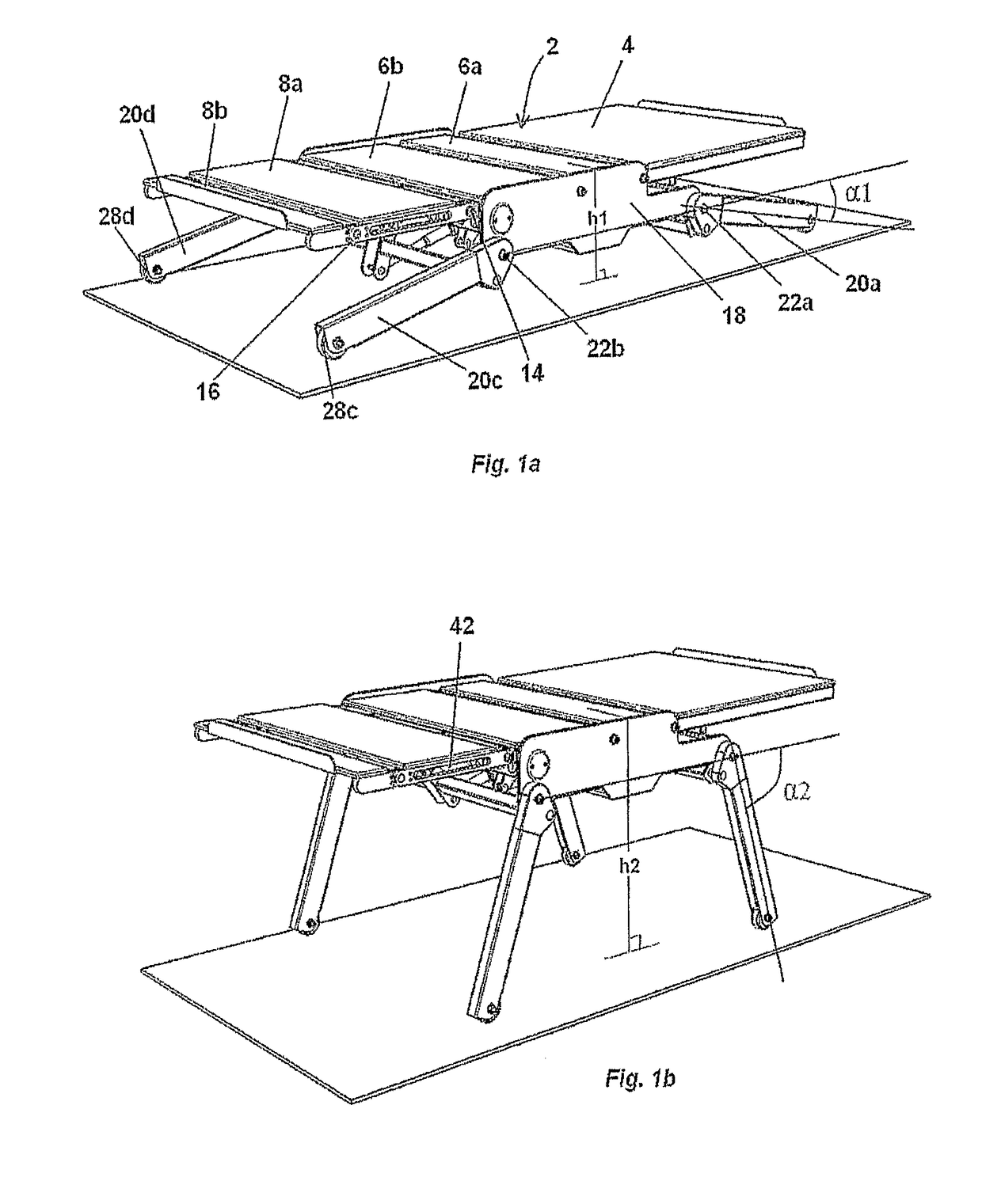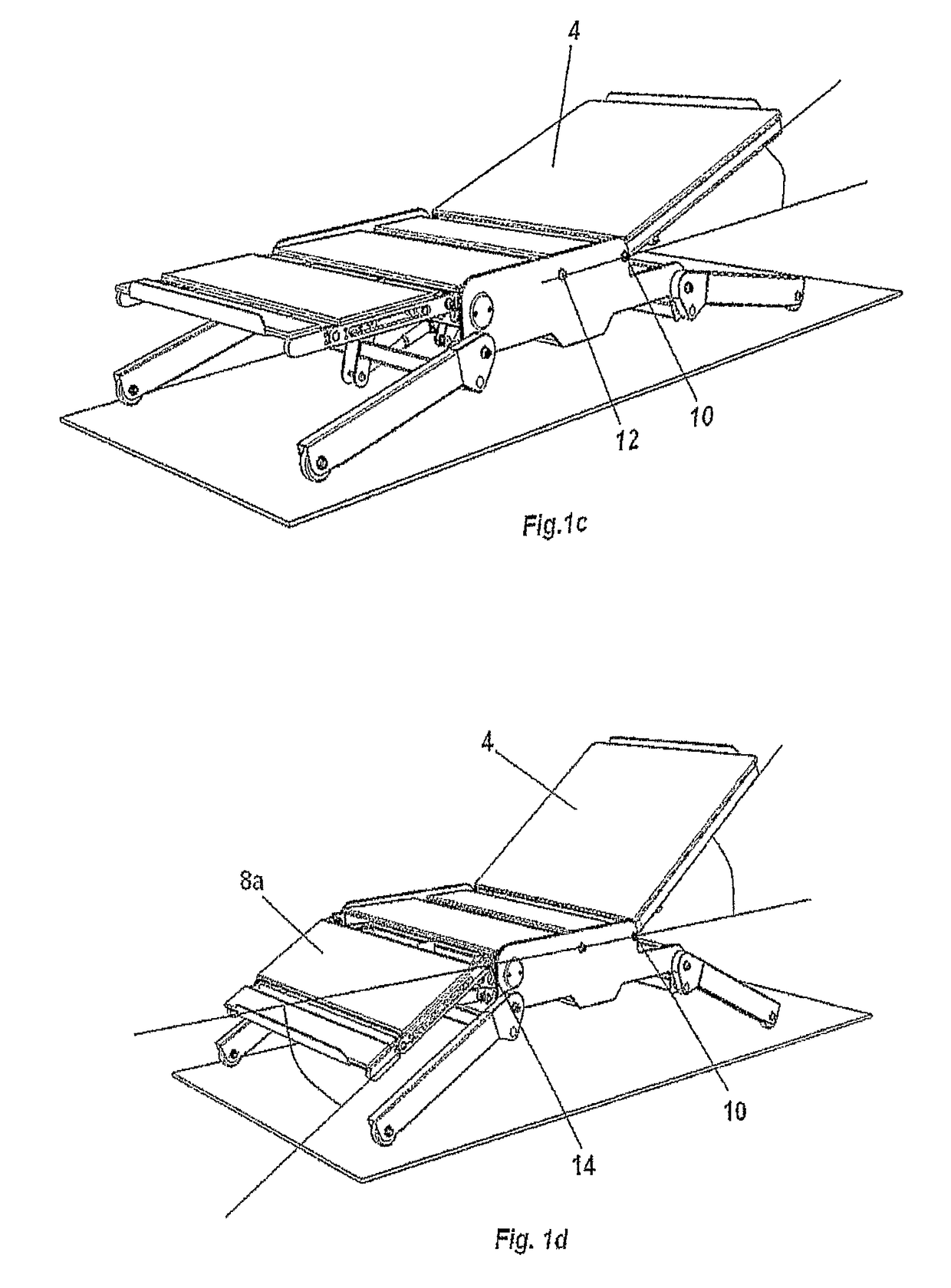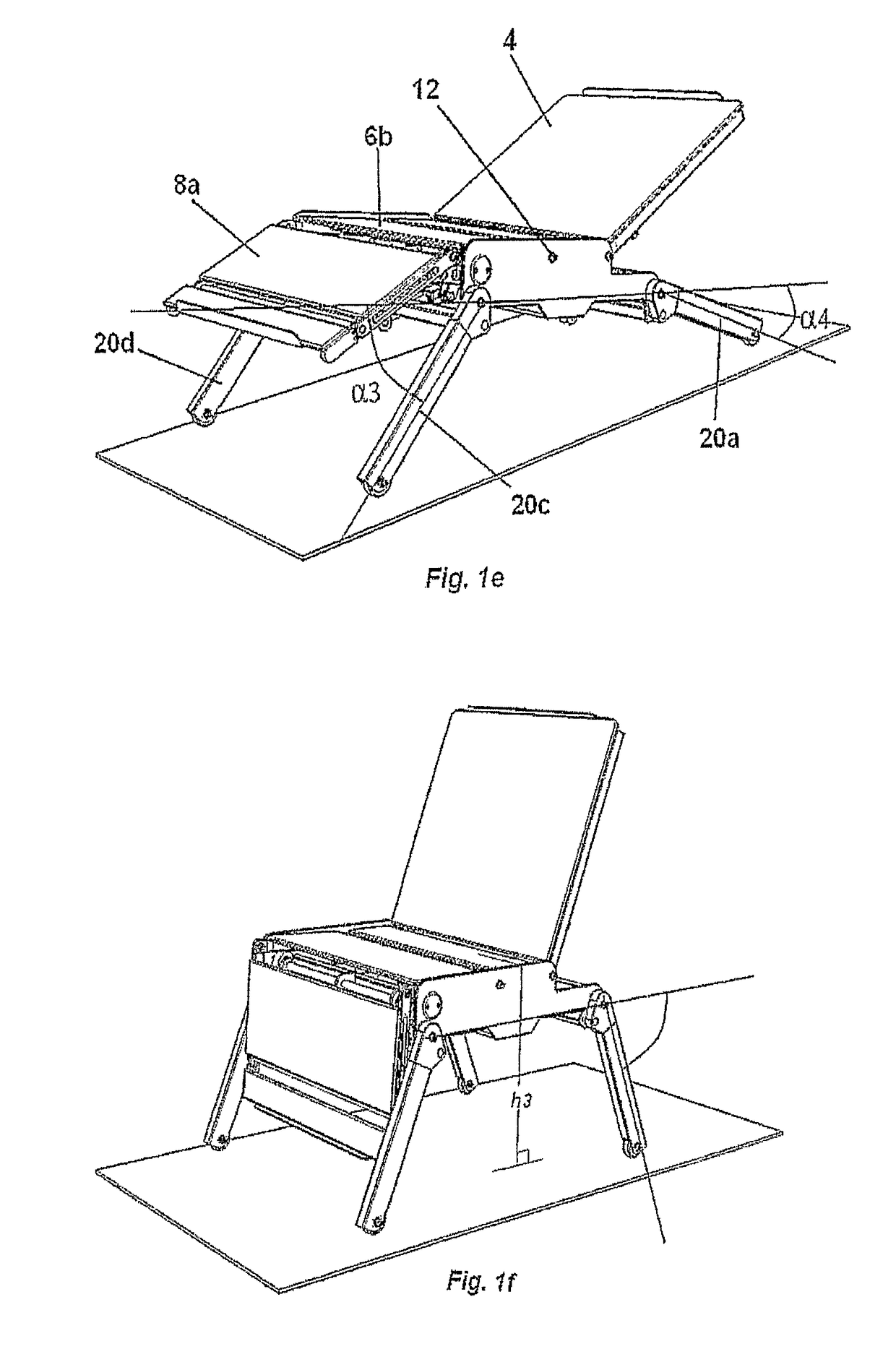Articulated bed
a technology of articulating beds and beds, applied in the field of articulating beds, can solve the problems of not easy to predict the cost of elderly care in the near future, the risk of patient or care giver, and the inability to meet the needs of patients, etc., and achieve the effect of reducing the forces of action
- Summary
- Abstract
- Description
- Claims
- Application Information
AI Technical Summary
Benefits of technology
Problems solved by technology
Method used
Image
Examples
Embodiment Construction
[0040]The articulated bed arrangement of the present invention has a patient support platform 2 having a length and a width, that comprises at least three sections; a head section 4, a seat section 6 and a foot section 8. In a preferred embodiment, the seat section 6 is further divided into a first and a second seat section, 6a and 6b, respectively, which is also the case for the foot section 8, which preferably is further divided into a first and a second foot section, 8a and 8b, respectively. As seen in for instance FIG. 1a, the head end section 4 is the longest section, and the seat section 6 is slightly longer than the foot section 8. When in the preferred embodiment, the first seat section 6a is adapted to be slightly shorter than second seat section 6b, and the first foot section 8a is adapted to be longer than the second foot section 8b. The widths of said sections are essentially the same. However, the actual lengths and widths of the sections of the bed are not critical to ...
PUM
 Login to View More
Login to View More Abstract
Description
Claims
Application Information
 Login to View More
Login to View More - R&D
- Intellectual Property
- Life Sciences
- Materials
- Tech Scout
- Unparalleled Data Quality
- Higher Quality Content
- 60% Fewer Hallucinations
Browse by: Latest US Patents, China's latest patents, Technical Efficacy Thesaurus, Application Domain, Technology Topic, Popular Technical Reports.
© 2025 PatSnap. All rights reserved.Legal|Privacy policy|Modern Slavery Act Transparency Statement|Sitemap|About US| Contact US: help@patsnap.com



